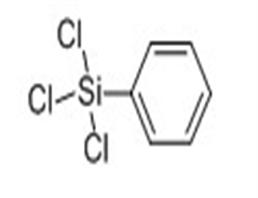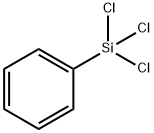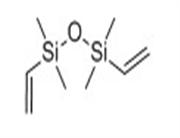| Chemical Properties |
Colorless transparent liquid |
| General Description |
A colorless liquid with a pungent odor. Flash point 91°F. Decomposed by moisture or water to hydrochloric acid with evolution of heat. Corrosive to metals and tissue. |
| Reactivity Profile |
Chlorosilanes, such as Phenyltrichlorosilane are compounds in which silicon is bonded to from one to four chlorine atoms with other bonds to hydrogen and/or alkyl groups. Chlorosilanes react with water, moist air, or steam to produce heat and toxic, corrosive fumes of hydrogen chloride. They may also produce flammable gaseous H2. They can serve as chlorination agents. Chlorosilanes react vigorously with both organic and inorganic acids and with bases to generate toxic or flammable gases. |
| Health Hazard |
Highly toxic; may cause death or permanent injury after short inhalation exposure to small quantity. Chemical burns to all exposed membranes and tissues with severe tissue destruction. Inhalation -- lungs may fill up with fluid or throat may swell causing suffocation. Eyes -- damage to corneas may cause blindness. Delayed: after oral exposure stomach and intestines may perforate or be obstructed by scar tissue. |
| Fire Hazard |
Do not get water inside containers. Vapors may travel to ignition source and flash back. Runoff to sewer may create fire or explosion hazard. Flammable/combustible material; may be ignited by heat, sparks or flames. Container may explode in heat of fire. Vapor explosion hazard indoors, outdoors or in sewers. Runoff to sewer may create fire or explosion hazard. Emits toxic chloride fumes when heated to decomposition. Do not mix with halogenated compounds, because a trace quantity of free halogen may cause violent explosion. May react violently with water. Readily hydrolyzed in water/moisture, producing hydrochloric acid. Avoid mixing with water or exposing to moisture. |

 China
China







